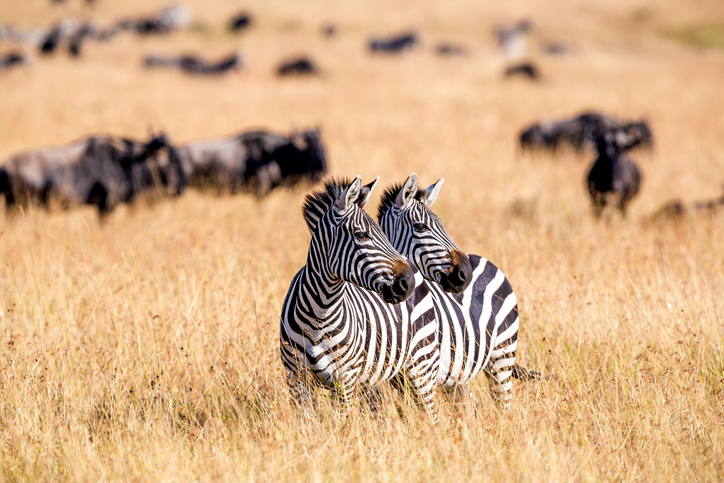The geographical spread of protected areas across the planet has increased in recent years as part of global efforts to support biological diversity. Yet financing for conservation has remained relatively stagnant. This column makes the business case for financially sustainable protected areas, setting out some universal principles for addressing their financing needs.
So you have proclaimed a new protected area. Everyone seems satisfied but there is an uncomfortable silence. The elephant’s still in the room and no-one’s looking at it. Finally, someone gingerly raises their hand and asks: “How are we going to finance it?” Silence. Everyone looks at each other, hoping someone’s already thought of this. If you are the only donor organization in the room, everyone’s looking at you. Sound familiar?
In 2017, 15% of the world’s terrestrial and inland waters, 13.2% of the marine environment under national jurisdiction (up to 200 nautical miles from shore) and 5.3% of the total global ocean area were protected areas. This is an admirable effort towards achieving the Convention of Biological Diversity’s Aichi Target 11.
But while the geographical spread of protected areas has increased, their financing has not, remaining relatively stagnant and insufficient to ensure the effective achievement of conservation and livelihood goals. The low levels of funding allocated for biodiversity conservation remains a universal concern, and the majority of protected area systems are highly dependent on direct government budget support and/or donor organization funding. For example, public expenditure on protected areas averages only 0.008% of GDP in Latin America. Increasing the number and area of protected areas without matching the required investment leads to the existence of ‘paper parks’ – those that exist only on paper.
But the consequences could be worse. A recent survey identifies 57 countries that have initiated legal processes to downgrade and downsize protected areas for a number of reasons including land use pressures.
Convinced? Had enough of the doom and gloom? Luckily, it gets better.
A number of organizations have developed initiatives to support conservation finance with a specific focus on protected area systems. For example, the Global Environment Facility (GEF) has continued to support projects that aim to improve the effective management of protected area systems by increasing and diversifying income streams, as well as strengthening the cost-effectiveness of management practices.
The United Nations Development Programme (UNDP) has initiated a project on biodiversity finance, BIOFIN, which aims to support participant countries in measuring their current biodiversity expenditures, assess their financial needs in the medium term, and identify the most suitable financial solutions to bridge their national biodiversity finance gaps.
Accurately determining the management costs of a protected area is an important step to justifying adequate funding to support conservation efforts. Current protected area expenditures are often significantly lower than the actual financial needs to maintain or improve levels of biodiversity.
A number of GEF-financed, UNDP-implemented national protected area financing projects have aimed to determine the financial gap between all sources of income and management needs. For example, the protected areas financial plan in Mozambique indicates that for a basic level of conservation management across the system, the financing gap is US$7.3 million annually for management needs and a further US$2 million for operational costs.
Similarly, the protected areas financial plan in Seychelles estimates that US$8.7 million is required annually to cover basic management activities, with an additional US$3.1 million for more active conservation management, monitoring, and research.
So how to address the financing needs of protected areas? It’s not that simple: all countries and protected areas are different. But there are some universal principles:
- Diversify income streams to reduce risk from external shocks, such as a decline in tourism, on visitor revenues.
- Reduce the transaction costs by collaborating among protected area agencies, NGOs, and even countries, when seeking financing. This will increase leverage and impact.
- Address the system level: once you address system-level financing, the number of financing options that become available increases significantly.
- Demonstrate a return on investment. What is the contribution of the protected areas system to productive sectors, such as tourism or fisheries, community livelihoods, and the national economy? Answer this, and you create a powerful justification for support.
- And finally, convince the finance ministry. They are often the gatekeepers to increased budget support, as well as system-level financing such as debt-for-nature swaps, biodiversity offsets, and blue and green bonds. To convince finance ministry officials, you need to know their concerns, their priorities, and how they make decisions.
The continued support for developing financially sustainable protected area systems is critical to maintaining increased levels of protected areas coverage, achieving biodiversity targets, and finally releasing the elephant from the room.






